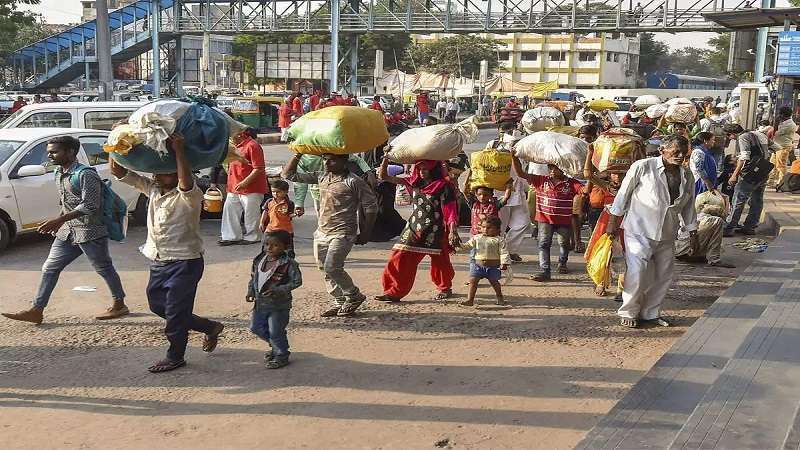Ring Roads: A costly affair for Urban Sprawl?
Ring road is a circular outer road usually built to
decongest the core city from vehicles which are bound to other areas but pass
through the core city (Through traffic). These are generally built around large
cities to improve the traffic flow in them. ‘Fringe Areas’ simply mean the
areas near city boundary. Unlike central cities, which are governed by formal
institutions for planning, governance, management and delivery of
infrastructure services, fringe areas are characterized by either poor
structure or the absence of governance institutions. These areas experience
what we call as urban sprawl and the spill over effects of costly development
in the core city. On one hand when we talk about benefits of constructing ring
roads, why is the story of fringe areas and their fate after these roads are
completed often neglected? Why is it that the roads which were once looked upon
as the door to prosperity are cursed by these fringe areas for haphazard
development? Does the answer lie in our incapability in understanding linkages
in urban structure or the answer lies elsewhere, where we deliberately try to
ignore them for our convenience? The problem may not be as visible as the
burning landfills or flooded streets, but is even more important. This is the
challenge of metropolitan planning, which has been sorely missing in our
development strategy.
A metropolitan area is any area having a population of
more than 1 million, consisting of two or more municipalities and which may
span over multiple districts. The Constitution has provided considerable authority
and autonomy to the states in delineating the administrative boundaries of
metropolitan regions. But metropolitan areas have been determined by the states
without studying and understanding the economic linkages present between the
core city and the periphery, which, if would have done, have helped in to
create a unified market, especially labor market. As a result, metropolitan regions
were created by default and not by design. Metropolitan cities of India such as
Delhi, Mumbai, Bengaluru, Kolkata, Chennai have acted as engines of growth
since the post-independence times, but lack of spatial planning (integrated
land use and transport) in them have left major scars on the city fabric, resulting
in significant deterioration in the quality of service delivery and ease of
living. The 74th Amendment Act mandated the setting up of Metropolitan Planning
Committees (MPC) in all metropolitan areas. Its objective was to prepare Draft
Development Plans with due regards to be given for coordinated spatial
planning, mutual sharing of resources, development of common infrastructure,
and environmental conservation. These Committees comprise of elected members from the
municipalities and panchayats constituting the metropolitan area as well as
representation from the state and central governments to bring about
coordination among the multiple authorities in a metropolitan area. Though the
MPCs are now being set-up in many states, their effective functioning remains a
question.
Due to disregard to integrated development and lack of
interest at the metropolitan level, what we lost was the opportunity to link
land use with the transportation network. Deficient and inefficient public
transport infrastructure led to increase in numbers of private vehicles. Those
owning vehicles explored new areas and started settling in the outskirts for
want of better living conditions at reasonable rates. Vice versa, high cost of
living in the core city forced people to go to the periphery and inefficient
public transport made people to buy private vehicles to travel to work. Any of
this situation led to what we call urban sprawl. This resulted in increased
travel trips from the periphery to the centre and back. The trunk routes from
the centre to the outskirts handled this excess load and to decongest them the
idea of ring roads was born. These ring roads would divert the out-bound
traffic from the city, leaving the core city less congested. All this seems
fine theoretically and ideal, but what is not looked upon is the effect of this
ring road on its adjacent land and the cost of infrastructure provision to it.
Also, what is neglected is the lack of planning controls in the area in between
the central city and the area adjacent to the ring road. This area succumbs to
the pressure of the central business district and the exponential growth of the
periphery due to the ring road. The cost of providing infrastructure in the
sandwiched area is comparatively less but the cost is high in the fringe areas
as all the services need to be taken from the centre to the last point of the
city.
Ring roads entail fast development at the periphery
thus pressurising the growth of the city towards the centre and along the ring
road. Ring roads are generally built around the administrative boundary of the
urban local body since they bear its cost, thus they will enjoy its attached
benefits. This leads to slow development in the inner side of the ring road coming
under the municipal jurisdiction but the outer side of the ring road which is
outside the city boundary has no strong governance body and thus experiences
haphazard and illegal development which is dependant on the core city for its
survival. Now, read this again by taking Pune Municipal Corporation as the city
with strong city centre, the Pune-Bangalore Highway as the ring road, Katraj
& Fursungi as the fringe areas, Kondhwa as the inner side of the ring road
and all this combined as an urban sprawl. The high land rates combined with the
unavailability of land within corporation limits as well as availability of
huge parcels of land outside the limit at cheaper rates and no such effective
governing body, attracted hordes of builders and developers here thereby
attracting a large population. All this development occurred along the outer
side of the Pune-Bengaluru Highway. The inner side – Katraj, Kondhwa like other
peripheral villages started experiencing squatterd development. Attempts of
organized and TOD in this area failed due to lack of land availability and
demand since most people lived outside the city limits and PMC in its very
limited budget could not provide for services of peripheral villages. This case
arose because PMC has fixed administrative boundaries, no higher authority to
coordinate planning and development in multiple jurisdictions (no metropolitan authority
in this case) and lack of planning controls ensured on the surrounding land
while constructing the highway. No integrated land use transport planning at
that time has today made a situation for new ring road for Pune and a new
greenfield Pune – Bengaluru highway. The existing highway is so congested and
overloaded that no new development is possible around it. Even expansion of the
existing road is not possible there.
The situation could have been avoided if there was a metropolitan planning authority at that time and if integrated landuse transport planning was thought of. Currently, the metropolitan planning authority is present but integrated planning needs to be implemented. This is not a case exclusive to Pune or Maharashtra but can be seen around various metropolitan cities in India. As PK Mohanty puts it, “the land use planner’s vision, the transport planner’s strategy and the urban economist’s perspective are not integrated” (Mohanty 2019, Sage). This should change. Inclusion of landuse transport planning needs to be made a mandatory part of the future development plans. Planning controls such as zoning, TP schemes should be enforced along the alignment of the ring roads. Inner part of ring roads coming under the limits of municipal boundaries can be developed along the Transit Oriented Development (TOD) Policy. Areas under outer boundaries should be necessarily under the control of relevant metropolitan authority and they should ensure planned development along the alignment using TP schemes and Land Redistribution mechanisms. Proper and controlled access to the roads will also reduce blackspots on the highway thereby reducing accidents and related fatalities by large numbers. Ring roads are economically very important projects. There monetization value should also be captured in the same proportion. Planned development can help both the municipal authority and the metropolitan authority raise funds for other projects such as providing better healthcare facilities. Land value can be unlocked and also provision can be made for green infrastructure. Summarizing it, TOD on the municipal side and TP schemes on the metropolitan side of the ring roads can transform the urbanscape of the city into an affair between the center and periphery and not a costly affair for urban sprawl.
Related Articles

'To Be or Not To Be' - The question our rivers are asking

CONCEPT OF 3-30-300 RULES IN URBAN AREAS

PLANNING INTERVENTIONS FOR MIGRANT LABOURERS

URBAN PLANNING AND ECONOMY AFTER BOYCOTTING CHINA PRODUCTS IN INDIA





